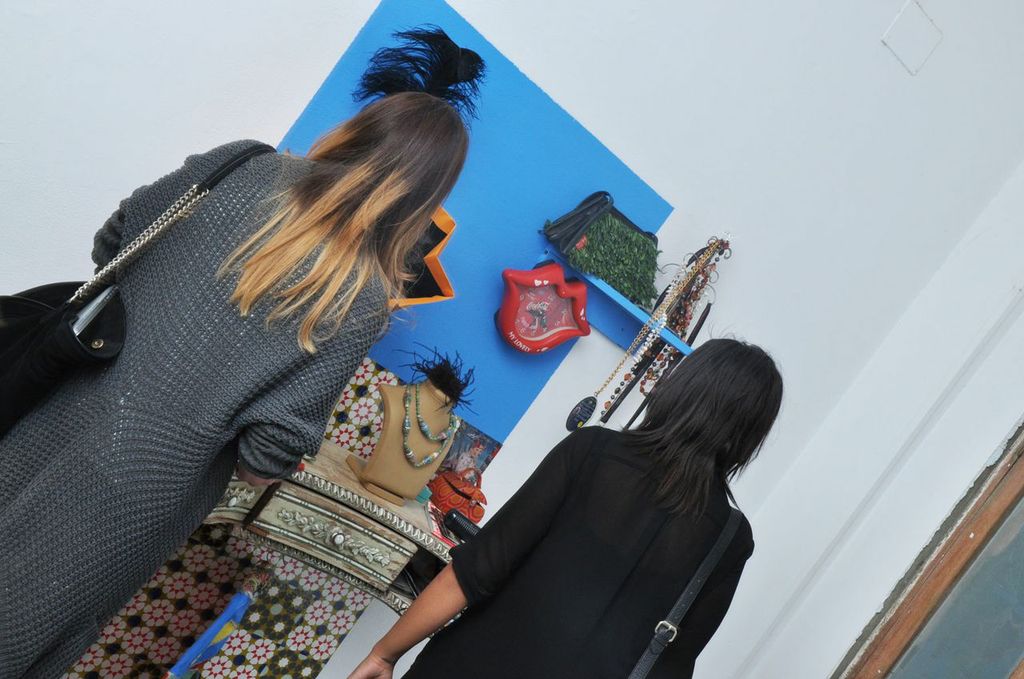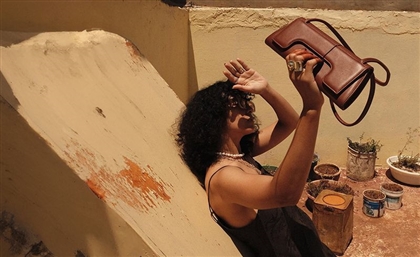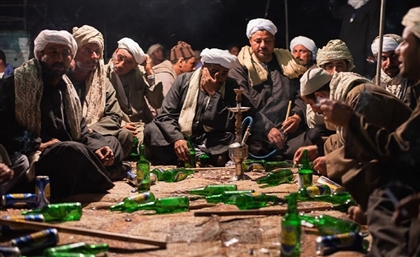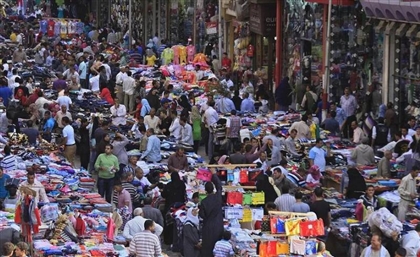Fashion... Reincarnated?
In his CairoScene debut, Karim Rahman takes on the art-pack at Darb 1718's exhibition focusing on recycled, reused and redefined fashion...

Here I am, staring at this blank word document, with that incessantly annoying cursor flashing in time with my self-doubt and with Sara Bareilles’ new single, Brave, crooning in the background (totally worth a listen, by the way) and I have absolutely no idea how to start this article. As my debut piece for CairoScene and my stage entrance to the world of ‘the press’, I have to say I’m kind of feeling the pressure. I’ve always wanted to work in fashion (and still intend to), and to find a place that actually allows me to cross paths with a lot of influential people in the design field is just more than I ever banked for.
Oh, who am I? Call me Kiki. Design student thrust into the world of online journalism. By time, you’ll get to know that I’m a bitch when it comes to my work (which is anything fashion related). Wear that wrong pair of jeans and I will pounce on you so fast, you won’t even have time to say “Oh my Gunn!” That’s a Tim Gunn reference. Anybody? No? Okay…
Fashion is everything. That is a statement I’ve always, and will always, stand by throughout the course of my career. Fashion is a tool of self-expression; it helps us identify with ourselves and with the environment around us. It helps us identify other people’s roles within our surrounding society, as well. So, when I was invited to tag along and cover the Fashion Reincarnated exhibition at Darb 1718, an exhibition that basically said no to those preconceptions, I couldn’t have been more excited. The fashion exhibition displayed the efforts of a workshop led by Swedish designer Maja Gunn and sponsored by the Swedish Embassy in Egypt. This workshop gave the participating Egyptian artists the chance to explore fashion from a different perspective; by using unorthodox recycled materials (garbage bags, rubber gloves, etc) and ignoring gender roles and stereotypes, as well as calling from personal memories and inspirations. The showcasing of the finished products was in conjunction with a collection of contemporary art installations, all curated and organised by Karina Shalaby. Sounds interesting, no?

Erm, yeah, maybe not so much.
In all fairness, I may have been predisposed to being utterly annoyed by everything due to the burgeoning migraine I had, and that was in no way alleviated by Jazz-Fusion drummer Ahmed Rabei’s sound checks prior to the event. Another quite disappointing aspect: no wine. No wine? How inhumane of them. Upon entering the exhibition, however, I must say that some of the works had me raising an eyebrow, especially Kegham Djeghalian’s designs, which focused on fashion using recycled materials, along with an accompanying photo shoot. While making a dress out of newspapers or garbage bags isn’t exactly a groundbreaking, innovative idea, it was pretty. I’ll give him that.
Much of the exhibited works of the Swedish workshop followed the same suite. For example, Salma Khalil’s piece (entitled Nostalgia) involved a dress purely made out of newspaper, with a flower bodice and a fanned, ruffled neckline. When asked about the concept behind her dress, she stated that she was trying to correlate her design with her actual wedding dress. By taking one of the flower design motifs found on her dress, she gave the most classic of embellishments a new meaning when recreated in paper.
Contemporary artist Noura Abouloyoun’s piece, The Consumer Being, was a purely abstract piece demonstrating how fashion connects the two sexes and how androgyny can be found in the brands that we wear, and not the type of clothing itself. For example, Converse shoes have become an essential part of the modern wardrobe, whether it’s owned by a male or a female. By combining these elements in a cardboard sculpture (for lack of a better term), she created The Consumer Being, one that is not affected by gender roles, only by fashion. A riveting concept that I fell instantly in love with, though I feel like it could have been finished better.

Another really interesting installation was May El Hossamy’s Z Dropbox. An open trunk and its contents (a pile of clothing and accessories), scattered across the floor, constituted the piece. Her concept was rooted in the fact that fashion involves a recycling process where clothes are handed down through generations, between siblings and even between parent and child (think hipster vintage, but with less pretentiousness). It showcased a mix between the past and the present, and how fashion linked those two time periods. The best part about that installation was how interactive it was; anyone can simply either add to the pile of discarded clothes, or take whatever they wish. I was promised an interactive installation when I headed to Darb, and this was an ingenious way to do it.

I gained one very useful piece of knowledge out of this excursion to Old Cairo: the term “Fash Mob,” Karina Shalaby’s contribution to the exhibition. It basically means exactly what you think it does: a flash mob, but instead of a large group of people dancing awkwardly to a very inappropriate-for-the-moment song, it’s an impromptu fashion show in the middle of a crowded area. I know, right?! It’s like Project Runway meets Glee. Shalaby’s fash mob was based on Doaa Bagato’s (another contributing artist) Art of Fencing piece. It basically involved a male and a female fencer battling it out (I’m not sure if it was supposed to be conceptual or just a sexy dance to the death kind of thing). However, if they really wanted it to be unexpected, the models kind of ruined the surprise by posing for quite a while right outside the exhibition, then proceeding to trapeze up and down the exhibition floors, all the while taking no precautions to remain hidden.

Concluding this piece (I was asked to limit it to 600 words, so I’m getting my ass handed to me), I like the initiative. I think it’s absolutely wonderful that budding Egyptian designers are being educated and sought out by foreign artists, and that we’re taking the proper steps into ensuring that the fashion industry in Cairo gets a kick start. However, making dresses out of recycled materials is something the Fashion Design freshmen at my college (“my minions”, as I not-so-lovingly dub them) do for their end-of-semester project. I was expecting more out of the box thinking, fresher ideas and deeper representations of the androgyny concept. Alas, I was slightly disappointed. However, I commend the artists that took part in this, congratulate them on their work and hope to see much more (or actually join them) in the future.
- Previous Article I Got Banged!
- Next Article Nomades Land
























